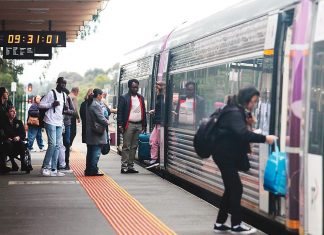THE aftermath of her 15 year-old granddaughter’s suicide four years ago left Traralgon woman Joan paralysed with anxiety and swamped by feelings of inadequacy.
The national focus on suicide this week is “confronting” for Joan, whose name has been changed to protect her identity.
She spoke with The Express about her experiences in the hope “it might help one person”.
“It is just such a personal thing, on every level,” the still heart-broken grandmother said.
“In the six to eight weeks after Anna (whose name has also been changed) died, we had a constant stream of people at our home who had been, or knew someone who had been, suicidal or depressed… it felt like we could have held a symposium just for Traralgon.”
The impact of Anna’s death, which followed a previous suicide attempt and a long association with local support services, was “like being winded…just a massive kick in the guts,” Joan said.
“The hardest part was trying to get our heads around the choice she made – it just made us feel so lacking… knowing that loving her was not enough.
“Afterwards, I couldn’t breathe or even walk down the street… I just wasn’t prepared for the physical impact.”
Despite the intense efforts of Joan and her husband to help Anna navigate her way through persistent challenges, Joan said “we were just never enough, we couldn’t do enough… this was something she wanted to do”.
She said the suicide of a loved one “makes everyone around them feel guilty that they missed things”.
Though Anna accessed local support services, “to the point of sometimes being over-serviced”, Joan called for “more open” information sharing between agencies working with suicidal youth and their support people.
“When Anna was 14 she was vulnerable, in a dangerous situation, we cared for her 24/7 but they (a local agency) would not share some information with us because it would ‘betray her confidence’ even though she had told them she would kill herself… we are talking about a child,” she said.
Battling welfare bureaucracy was also a challenge.
“I would ask that these agencies stop using jargon with families, the acronyms can be confusing… we have enough on our plates without having to decipher all that,” Joan said.
Convinced there was no single risk factor behind a person’s decision to take their own life, Joan said Anna’s fractured relationship with her parents was problematic but added “early on we decided there would be no blame apportioned for what happened or we could not go on.”
“The memorial side of things is also really hard,” said Joan, who has a large extended family.
“There are a million things we miss (about Anna) but it can create real discomfort knowing how to talk about, and support, really young kids in the family.
“Try explaining to a five year-old what has happened when they ask… this was really hard on our in-laws too, they had to support their kids through this.”
Recovery has been a long road.
“No-one can really say or do anything that makes a difference, and with so many teenagers in our family… well it strikes fear into your heart,” Joan said.
Last month marked four years since Anna’s death and, with time, has come some healing, however slight.
“You have to resolve that sense of helplessness around another person’s decision,” Joan said.
“There is no prescription to make things okay… I wish I could say ‘just do this and this’.
“This is the sort of incident that you know about but you hope will never happen in your family… but I would just say to people ‘the sun will come up tomorrow’.”










